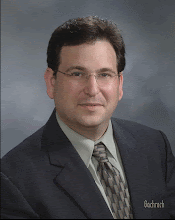
Thursday, June 25, 2009
Dentistry goes digital, makes a better impression

Friday, June 12, 2009
CONSCIOUS SEDATION

TAKING THE FEAR OUT OF DENTISTRY
WHAT IS ORAL SEDATION?
Conscious sedation also referred to as oral sedation or ‘sleep dentistry’ is a great option for many individuals for most procedures, including for use with the laser. Conscious sedation is administered through a small oral pill that creates feelings of relaxation while eliminating anxiety. Some individuals may not remember their appointment and surely will not remember any discomfort or fear. The medication is administered an hour prior to the appointment and in some cases, again immediately proceeding the procedure. The patient can answer questions and follow direction, and is ‘awakened’ from the ‘sleep’ by juice or sugary food. A good night sleep should follow, with a feeling of rest and relaxation the next morning. Individuals with a history of medication or alcohol concerns should consult their physician prior to their treatment using conscious sedation.
conscious sedation, and has completed a three-part conscious sedation course through DOCS, Dental Organization for Conscious Sedation, including Advanced Cardiac Life Support (ACLS). Smileboston is one of the first offices in Massachusetts to be a part of the Sedation Dentistry Network. SDN is a group of Massachusetts’s dentists that have specific training and licensure to treat clinically and personally individuals that have moderate to severe issues with fear of dentists and dental treatment.
In addition to conscious sedation, we offer a variety of options for those who are interested in seeking dental treatment from the basics of music to treatment within a local hospital using IV sedation.
Quiet Relaxation: Whether you choose to close your eyes to your favorite music or use our special glasses to watch a great movie, you’ll enjoy quiet relaxation. Smileboston boasts one of the best DVD collections in any dental office in Boston, from Blazing Saddles to Zenthura.
In-Office Medical Options: Along with Triazolam, we offer our patients nitrous oxide (sleeping gas) that dissipates immediately and pre-medications such as Valium to relieve anxiety prior to your appointment. Discussing your concerns and options with Dr. Spitz will allow you to choose the option that is right for you.
Hospital IV Sedation: If having the majority of your dental needs taken care of while under IV sedation is your choice, Dr. Spitz can schedule your visit and complete almost your entire treatment at Franciscan Children’s Hospital in Brookline. Franciscan Children’s Hospital has a treatment area specifically dedicated to dental needs. Dr. Spitz has full privileges at the hospital and has comfortably treated many of his patients there since 1997.
Wednesday, June 3, 2009
Why does the Waterlase Laser work?
When using the laser, in many cases anesthetic may not be necessary as it is ‘numbing’ the area as it is being treated. Furthermore, as the surgical site is minimized without the need of the scalpel and/or drill, the discomfort is as well. Without anesthetic, returning to work the same day following the procedure is viable as there is no residual numbing effect and, as the fear of the needle is relieved, many individuals can get the treatment they need without worrying about ‘the shot’.
